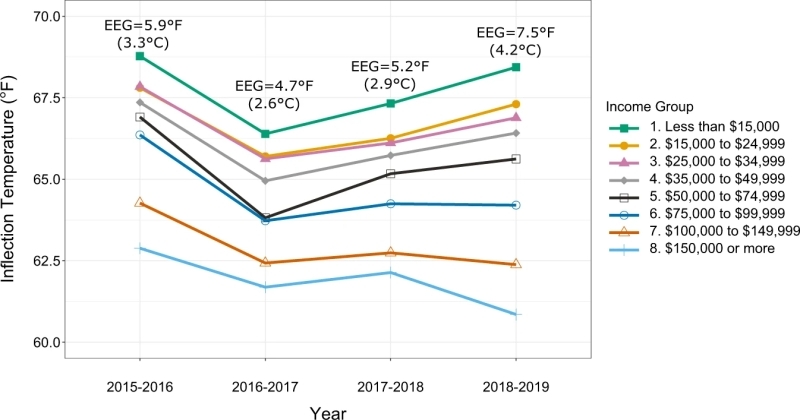
New research from Assistant Professor Lucy Qiu in Nature Communications finds more households in the United States experience energy inequality than previously understood based on a new energy poverty research metric—the energy equity gap.
“The new energy equity gap metric developed in this study can help policymakers identify a form of energy poverty that is usually hidden by using traditional income-based metrics,” said Assistant Professor and Principal Investigator Lucy Qiu.
Expanding on traditional research that often ignores behavior patterns, especially in low-income communities, this new analysis includes energy limiting behaviors to create an accurate estimate of the energy burden for households in the US. Calculated by the difference between inflection temperatures—when households start using cooling systems—for low-income and high-income groups, the paper finds the energy equity gap to be between 4.7–7.5 °F (2.6–4.2 °C), which is much larger than simple income-based energy poverty metric.
Previously not understood, this study expands upon existing research on energy poverty to find more households that endure high or low temperatures to limit spending. Policymakers will be better equipped to identify who needs energy assistance and who is in danger of extreme temperatures from climate change due to financial strain.
“For example, if we use the 10% threshold in the traditional energy poverty metric meaning that a household spending more than 10% of their income is categorized as experiencing energy poverty, then we may miss the low-income households that deliberately reduce their energy use such as heating or cooling in order to have enough money for other essential household expenses such as food and medical needs," added Qiu.
This research is a joint collaboration of researchers at Carnegie Mellon University and the University of Maryland College Park and is supported by a National Science Foundation grant.




